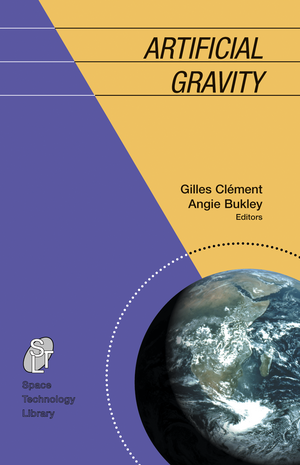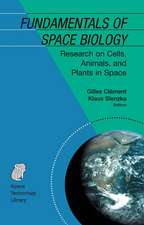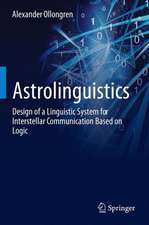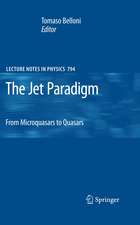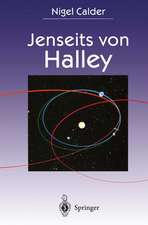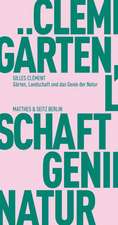Artificial Gravity: Space Technology Library, cartea 20
Editat de Gilles Clément, Angeli Bukleyen Limba Engleză Hardback – 6 iul 2007
| Toate formatele și edițiile | Preț | Express |
|---|---|---|
| Paperback (1) | 1215.99 lei 6-8 săpt. | |
| Springer – 3 noi 2014 | 1215.99 lei 6-8 săpt. | |
| Hardback (1) | 1057.68 lei 38-44 zile | |
| Springer – 6 iul 2007 | 1057.68 lei 38-44 zile |
Din seria Space Technology Library
- 20%
 Preț: 569.37 lei
Preț: 569.37 lei - 17%
 Preț: 363.73 lei
Preț: 363.73 lei - 20%
 Preț: 476.04 lei
Preț: 476.04 lei - 18%
 Preț: 947.98 lei
Preț: 947.98 lei - 15%
 Preț: 643.99 lei
Preț: 643.99 lei - 18%
 Preț: 1688.57 lei
Preț: 1688.57 lei - 18%
 Preț: 957.75 lei
Preț: 957.75 lei - 18%
 Preț: 1393.27 lei
Preț: 1393.27 lei -
 Preț: 393.35 lei
Preț: 393.35 lei - 18%
 Preț: 956.03 lei
Preț: 956.03 lei - 15%
 Preț: 647.08 lei
Preț: 647.08 lei -
 Preț: 429.69 lei
Preț: 429.69 lei - 18%
 Preț: 1215.04 lei
Preț: 1215.04 lei - 24%
 Preț: 810.45 lei
Preț: 810.45 lei - 18%
 Preț: 1009.08 lei
Preț: 1009.08 lei - 18%
 Preț: 955.40 lei
Preț: 955.40 lei - 18%
 Preț: 947.50 lei
Preț: 947.50 lei - 15%
 Preț: 584.92 lei
Preț: 584.92 lei - 15%
 Preț: 647.40 lei
Preț: 647.40 lei - 18%
 Preț: 1834.77 lei
Preț: 1834.77 lei - 15%
 Preț: 590.16 lei
Preț: 590.16 lei - 15%
 Preț: 600.30 lei
Preț: 600.30 lei - 15%
 Preț: 713.33 lei
Preț: 713.33 lei - 23%
 Preț: 739.84 lei
Preț: 739.84 lei - 18%
 Preț: 998.66 lei
Preț: 998.66 lei - 23%
 Preț: 748.98 lei
Preț: 748.98 lei
Preț: 1057.68 lei
Preț vechi: 1391.68 lei
-24% Nou
Puncte Express: 1587
Preț estimativ în valută:
202.38€ • 211.31$ • 167.50£
202.38€ • 211.31$ • 167.50£
Carte tipărită la comandă
Livrare economică 01-07 aprilie
Preluare comenzi: 021 569.72.76
Specificații
ISBN-13: 9780387707129
ISBN-10: 0387707123
Pagini: 364
Ilustrații: XXI, 364 p.
Dimensiuni: 160 x 240 x 22 mm
Greutate: 0.78 kg
Ediția:2007
Editura: Springer
Colecția Springer
Seria Space Technology Library
Locul publicării:New York, NY, United States
ISBN-10: 0387707123
Pagini: 364
Ilustrații: XXI, 364 p.
Dimensiuni: 160 x 240 x 22 mm
Greutate: 0.78 kg
Ediția:2007
Editura: Springer
Colecția Springer
Seria Space Technology Library
Locul publicării:New York, NY, United States
Public țintă
Academic/professional/technical: Research and professionalCuprins
The Gravity Of The Situation.- Physics of Artificial Gravity.- History of Artificial Gravity.- Physiological Targets of Artificial Gravity: The Sensory-Motor System.- Physiological Targets of Artificial Gravity: The Cardiovascular System.- Physiological Targets of Artificial Gravity: The Neuromuscular System.- Phyysiological Targets of Artificial Gravity: Adaptive Processes in Bone.- Interactions Among the Vestibular, Autonomic, and Skeletal Systems in Artificial Gravity.- Interactions Among Artificial Gravity, The Affected Physiological Systems, and Nutrition.- Artificial Gravity And The Immune System Function.- Medical, Psychological, and Environmental Issues of Artificial Gravity.- Safety Issues in Artificial Gravity Studies.- Recommended Research.
Recenzii
From the reviews:
"The book has grown out of the work of the ESA Topical Team on Artificial Gravity, which issued its Final Report in 2006. … provide a useful summary of artificial-gravity research. The extent to which microgravity affects different physiological systems differently, and the complex-manner in which they all interact, was a real eye-opener to me. … This would greatly increase its value as a resource for those engaged in the planning of future human space exploration." (Ian Crawford, The Observatory, Vol. 128 (1203), 2008)
"The book has grown out of the work of the ESA Topical Team on Artificial Gravity, which issued its Final Report in 2006. … provide a useful summary of artificial-gravity research. The extent to which microgravity affects different physiological systems differently, and the complex-manner in which they all interact, was a real eye-opener to me. … This would greatly increase its value as a resource for those engaged in the planning of future human space exploration." (Ian Crawford, The Observatory, Vol. 128 (1203), 2008)
Notă biografică
Gilles Clement is a neurophysiologist who has been involved in space research on astronauts since 25 years. He wrote "Fundamentals of Space Medicine” and "Fundamentals of Space Biology”. He is coordinating the vision of a group of international scientists, doctors and engineers for validating the implementation of artificial gravity for long-duration, exploratory missions.
Angie Bukley is an aerospace control systems engineer who has over 20 years experience in the aerospace business working with NASA, the US Department of Defense, and the Aerospace Corporation. She is currently the Dean for Research and Graduate Studies at the Russ College of Engineering & Technology, Ohio University.
Angie Bukley is an aerospace control systems engineer who has over 20 years experience in the aerospace business working with NASA, the US Department of Defense, and the Aerospace Corporation. She is currently the Dean for Research and Graduate Studies at the Russ College of Engineering & Technology, Ohio University.
Textul de pe ultima copertă
Protecting the health, safety, and performance of exploration-class mission crews against the physiological deconditioning resulting from long-term weightlessness during transit and long-term reduced gravity during surface operations will require effective, multi-system countermeasures. Artificial gravity, which would replace terrestrial gravity with inertial forces generated by rotating the transit vehicle or by short-radius human centrifuge devices within the transit vehicle or surface habitat, has long been considered a potential solution. However, despite its attractiveness as an efficient, multi-system countermeasure and its potential for improving the environment and simplifying operational activities, much still needs to be learned regarding the human response to rotating environments before artificial gravity can be successfully implemented.
This book reviews the principle and rationale for using artificial gravity during space missions, and describes the current options proposed, including a short-radius centrifuge contained within a spacecraft. In Artificial Gravity, experts provide recommendations on the research needed to assess whether or not short-radius centrifuge workouts can help limit deconditioning of physiological systems.
"Aided by an exquisite group of experts, Gilles Clement and Angie Bukley have managed to put together THE new, comprehensive reference book on artificial gravity. This book will be an essential resource for students, scientists, and program planners alike."
-Oliver Angerer, European Space Agency
"Drs. Gilles Clement and Angie Bukley have provided a unique book that looks at the practicability of artificial gravity, and have invited respected experts in the space flight community to contribute to this discourse. Like the early 1960 studies of artificial gravity, their book charts the future, guiding both seasoned investigators and students with the tools necessary for understanding the complex problems of artificial gravity and the effect of that environment on biological systems."
-Millard F. Reschke, NASA, The Johnson Space Center
This book reviews the principle and rationale for using artificial gravity during space missions, and describes the current options proposed, including a short-radius centrifuge contained within a spacecraft. In Artificial Gravity, experts provide recommendations on the research needed to assess whether or not short-radius centrifuge workouts can help limit deconditioning of physiological systems.
"Aided by an exquisite group of experts, Gilles Clement and Angie Bukley have managed to put together THE new, comprehensive reference book on artificial gravity. This book will be an essential resource for students, scientists, and program planners alike."
-Oliver Angerer, European Space Agency
"Drs. Gilles Clement and Angie Bukley have provided a unique book that looks at the practicability of artificial gravity, and have invited respected experts in the space flight community to contribute to this discourse. Like the early 1960 studies of artificial gravity, their book charts the future, guiding both seasoned investigators and students with the tools necessary for understanding the complex problems of artificial gravity and the effect of that environment on biological systems."
-Millard F. Reschke, NASA, The Johnson Space Center
Caracteristici
Today’s approach to countering the deleterious effects of microgravity are piece-meal, whereas this book provides an integrated countermeasure affecting multiple physiological Readers will gain insight into potential research areas for further studies, as well as information to support the planning and design of future space missions Many detailed illustrations are included
